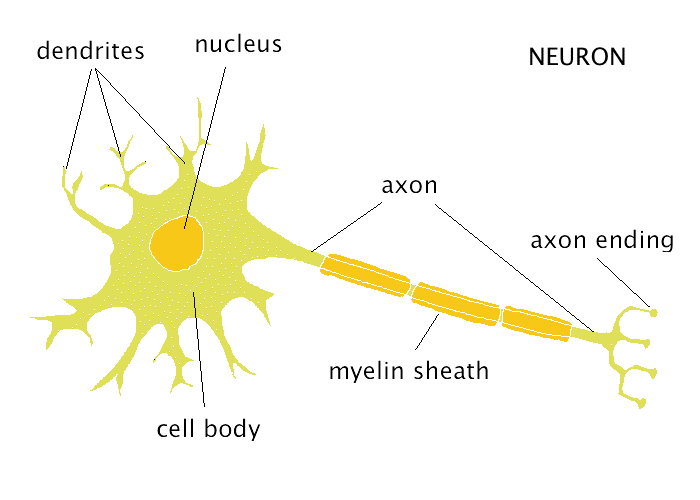Central Nervous System
- Central Nervous System(CNS) consists of Brain and Spinal cord.
- CNS controls and coordinates various functions of the body.
BRAIN
- In an adult, the average weight of the brain is 1.4kg(1400gm).
- Protective membrane which envelops the brain and spinal cord – Meninges.
- Part of the skull that encloses the brain – Cranium.

i. Cerebrum
- The largest part of the human brain.
- Cerebral hemisphere is divided into frontal, parietal, temporal and occipital lobes.
- Cerebrum controls voluntary actions.
- It is the centre for intelligence, thoughts, emotion, willpower, memory, consciousness, imagination, experience, recognition, reasoning, weeping, laughing, voluntary controls etc.
- The part of cerebrum which is known as sensory speech area(motor speech area) – Broca’s area.
ii.Cerebellum
- Also known as Little Brain.
- Centre for co-ordination of muscular movement.
- Primary centre for balancing, equilibrium and orientation of body.
- It is the part of the body on which Alcohol affects.
NB: The part of brain on which painkillers work - Thalamus
iii.Medulla Oblongata
- Controls involuntary actions like working of heart, contraction of blood vessels, respiratory and digestive movements.
- Central control of respiratory activity.
- Centre for vomiting, coughing and sneezing.
- An injury to medulla oblongata may cause sudden death.
iv. Hypothalamus
- Centre for hunger, thirst, sweating, sleep, temperature, love and hate.
- The thermo regulatory centre of the human body.
- Hormones produced by Hypothalamus – Oxytocin & Vasopressin.
SPINAL CORD
- Controls reflex actions in humans.
- Spinal cord is the part of brain passing through the vertebrae or spine.
- Spinal cord has a length of 45cm.
- There are 12 pairs of cranial nerves and 31 pairs of spinal nerves.
Neurons
- Neurons carry message intheform of electric signals.
- The basic functionalunit of the nervous system is the neurons .
- Neurons are connectedtoeach other to form networks.
- Parts of neuron are – Axon, Dendron and Synaptic nobe.
- Sensory neurons respond to stimuli like touch, sound, light etc. and send signals to spinal cord and brain.
- Motor neurons receive signals from brain and spinal cord.
- Part of the neuron which carries in impulses is called the Axon.
- Axon passes an impulse into another neuron through a junction called synapse.
- Part of neuron which receives nerve impulse – Dendrites.
- Normally signals are sent from the axon of one neuron to a dendrite of another.
- Chemical which helps in transmission of nerve – Acetyl Colin.
- Protective sheath of Axons – Myelin Sheath.
- Colour of Myelin Sheath – White.

- The disease occurs due to the loss of neuron in the brain – Alzheimer’s disease.
- The loss of motor neuron in the body causes – Parkinson’s disease.
- Meningitis is affected to Meninges. It is caused by Bacteria, Virus, Fungus and Parasites. Bacterial Meningitis is more severe than viral meningitis.
- Encephalitis is an infectious brain disease caused by virus.
- A disability of brain to recognize letters and words properly – Dyslexia.
- Clotting of blood in the blood vessels of brain – Cerebral Thrombosis.
- Bleeding caused by the breakage of blood vessels of brain – Cerebral haemorrhage.
- When the flow of blood to the brain is obstructed for more than 5 sec. , it results inunconsciousness.